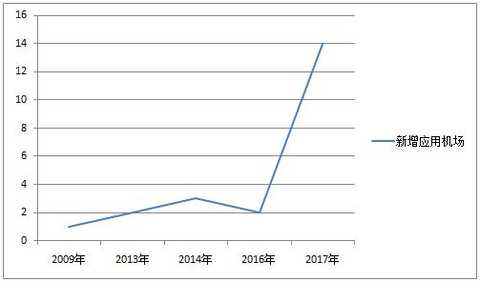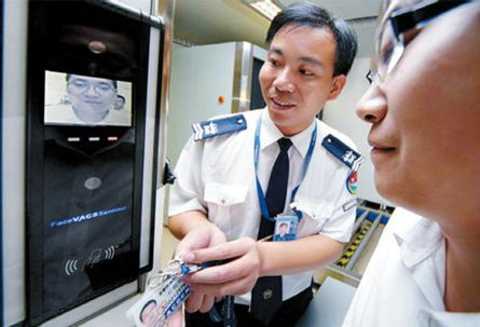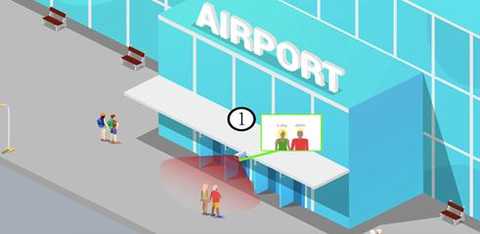Foreword: Face recognition technology has been explored at domestic airports for 10 years, but the actual large-scale application has been in the past two years. This paper will comb the simple history of face recognition technology in domestic airports, and take Yinchuan Hedong Airport jointly implemented by Yunqi Technology and Xi'an Yuetai of the Western Airport Group as an example , pointing out that the level of airport intelligence has reached a stage of full-scale outbreak. Automated Face Recognition (AFR) has been researched for nearly 50 years (starting with the technical reports published by 1965 Chan and Bledsoe in Panoramic Research Inc.), while large-scale commercialization is near What happened in a few years. As a means of biometric identification, face recognition is highly concerned by many industries because of its rapid, non-inductive and compatibility. Airports with strong security needs are no exception. The application of face recognition in the airport is very small between domestic and foreign countries, and even slightly ahead of foreign countries. This article focuses on the application of face recognition in domestic airports. So far, the process of face recognition applied at the airport can be divided into two stages as a whole: the first stage is the exploration of the face recognition technology from the laboratory to the airport, after nearly 7 years of exploration. The second stage is the deep recognition of the recognition rate after the deep learning intervention, the airport from the pilot to the large-scale application for more than three years. Number of airports that have newly applied face recognition technology in China over the years* Long period of latent exploration in the first stage As early as 2001, the United States had a "911" incident. Washington considered using biometric technology to enhance identity authentication and blacklist management at the airport, which opened the curtain for biometrics applications at airports. In 2006, Professor Su Guangda from the Department of Electronic Engineering of Tsinghua University began to try to apply face recognition technology to public security, airports and other fields. In the same year, Chongqing Jiangbei Airport also announced the verification of face recognition technology. But until the summer of 2008, when the British Heathrow Airport announced that it would adopt face recognition technology, the domestic airport promotion process is still in the foreseeable future. Beijing Capital Airport Face Recognition System In 2009, Beijing Capital Airport launched a face recognition system for employee identification, which is the first airport in China to use face recognition technology . Matching is the magnetic card sensing certificate with personal information. The employee needs to swipe the card and then use face recognition. After the identification system matches the information in the magnetic card, the identification system sends a “beep†sound, which makes the airport staff Successfully passed the security checkpoint and entered the work area. In January 2013, Taiwan Taoyuan Airport used face recognition for entry and exit self-service customs clearance. It is the first airport in China to apply face recognition technology to inbound and outbound management . The first mainland to apply face recognition technology to entry and exit self-service clearance is Shenyang Taoxian Airport. During this period, many scholars and airports in China conducted useful experiments and explored some basic needs and problems of face recognition technology applied in airport scenes. However, due to the unsatisfactory effect of the traditional face recognition technology at that time, it was far from meeting the requirements of the airport for recognition speed, accuracy and anti-interference. Between 2012 and 2014, Japan's work on enabling face recognition at the airport experienced the process of verification, suspension, and restart. It finally landed in July 2017, which verified the disconnect between technology and actual use needs at the time, resulting in a long time. Landing. The second phase of Malaysia Airlines broke, the airport security revolution In 2014, in the Malaysian Airlines incident, two passengers boarded an international flight using the stolen passport in the Interpol database, which made people very worried about the procedures for document inspection and identity verification. This has once again prompted airports and airlines to pay attention to the application of biometrics. Face recognition technology can at least calibrate identity in video surveillance, security, and boarding. List of face recognition technologies on the domestic airport At this time, the deep learning that re-emerged in 2006 began to break through, and the recognition effect rose rapidly, moving from the laboratory to the industry. The strong demand and better recognition performance prompted the Civil Aviation Administration and the airport to start experimenting with the large-scale landing of face recognition technology. In July 2014, Nanjing Lukou Airport applied face recognition technology to the airport for the first time , but at this time, the boarding gate only displayed the passenger information collected, and it could not achieve automatic customs clearance. Since then, the airports in various regions have carried out a number of face recognition system verification methods to explore the way suitable for airport applications. In July 2016, Shenzhen Baoan Airport first embedded the face recognition system into the airport security information system. It marks that the face recognition technology has been accepted by the airport. In December 2016, Yinchuan Airport became the first airport in China to be fully officially launched on the face recognition system. The business was carried out in the terminal entrance, security checkpoint, VIP customer lounge, boarding gate, and access bridge. The application further enhances the airport security and service quality, and is comprehensively intelligent from the perspectives of security, operation, management and service . Airport comprehensive intelligent schematic (1) In 2017, the number of airports using face recognition technology has increased dramatically, showing a blowout situation. However, it is worth noting that most of them are used for security clearance, indicating that the airport is very cautious about the application of this new technology. The application is a wait-and-see attitude. Three key points for the first time, boarding, and comprehensive intelligence In the process of applying face recognition at domestic airports, there are three landmark events that have become the key points in promoting history. 1. The first attempt of Beijing Capital Airport in 2009 was the first step for domestic airports to begin to recognize face recognition technology. However, limited to the level of face recognition technology at the time, they had to use magnetic cards for cross-validation to ensure the uniqueness of identity. In the recognition speed and accuracy, the face recognition technology at that time and the face recognition technology after deep learning intervention are not at a level; 2. In 2014, Nanjing Lukou Airport first tried to apply face recognition technology to boarding. Although it was also limited by the level of technical business at that time, it could not achieve self-service clearance, but it provided a reference for the next application. And experience; Fully intelligent map of the airport (2) 3. In December 2016, the comprehensive intelligence of Yinchuan Airport marked the entry of a new level of airport intelligence. In addition to security clearance and self-check-in, face recognition and related computer vision technology is applied to dynamic control, flow guidance, smart navigation, VIP welcome, track retrieval, cleaning reminder, etc. for face recognition in 2017 Technology has laid a good foundation for the explosion of airport applications. What problems have been solved by comprehensive intelligence? Airport security Through the construction of the system, the pre-existence prevention capability of the airport will be further improved, and passive and active. The airport dynamic deployment control system realizes the “blacklist†active warning and proactive defense. The human-integrated detection system can fundamentally curb the illegal activities of criminals attempting to mix into the airport control area by fraudulent use of documents or forgery of documents. The passenger face recognition at the boarding gate compensates for the loopholes in the traditional airport security system, and also avoids the phenomenon of passengers on the wrong plane. Airport service experience After the official operation of the new T3 terminal building at Yinchuan Airport, Yinchuan Airport has been able to meet the annual passenger throughput of 10 million passengers and cargo and mail throughput of 100,000 tons. Airport services face challenges in the face of increasing passenger throughput. By adopting face recognition technology as the starting point and platform data analysis as the core, a variety of airport service function applications (such as VIP identification, green channel, etc.) are derived to improve the service quality of airport and reduce the repeatability of airport staff. Work to improve efficiency. Airport operation Intelligent cleaning reminds people through the flow statistics, accurately calculate the number of restrooms, predicts the cleaning time through data analysis, and then informs the staff to maximize the liberation of labor and improve production efficiency. Airport internal management Use face recognition technology to enhance the internal management of the airport itself. The staff face information and the photo reserved for the photo are passed after the pass, and the phenomenon of fraudulent use of the work card is eliminated. Lay the foundation of big data application Through the face detection, the system can organically connect all kinds of information of airport passengers with the passenger face as the core, and form relatively complete data information for a single individual. The system collects, stores, and organizes the acquired information (such as name, age, place of origin, consumption habits, etc.). For the application of big data analysis in the late stage of the airport, the construction of smart airports provides basic data construction. Conclusion In the context of the Belt and Road Initiative, China faces unprecedented opportunities and faces unprecedented challenges. The “Belt and Road†covers more than 60 countries and has a population of 4.4 billion. Most countries have many ethnic groups. Christianity, Buddhism, Islam, Hinduism and other multi-religious beliefs coexist. Some religions also have different sects, and historical disputes between ethnic groups and religions. Complex, international terrorism, religious extremism, ethnic separatist forces and transnational organized criminal activities in the Middle East, Central Asia, Southeast Asia and other regions, the situation in the region has been turbulent for a long time. These non-traditional insecurity factors have not only worsened the local investment environment, threatened the safety of personnel and equipment, but also spread the opportunity to spread and penetrate into China through the “Belt and Road†initiative, even connecting with domestic and foreign criminals. Borrowing and undermining China's stable domestic social environment. In this regard, comprehensively strengthening security prevention and intelligent work is very important. For airports, railway stations, subways, bus stations and other places where traffic is relatively large, face recognition and intelligent analysis techniques, including face information collection, are required. Pre-processing of face recognition, tracking of face position, etc., by comparing with the information in the crime database, whether there are criminals in the crowd who are wanted by the police, providing more security for public places, as much as possible Dangers are killed in the cradle. Editor in charge: Wang Huixia Key Decoration,Anti-Lost Lanyard,Wrist Lanyard Keychain,Key Lanyard GuangZhou JinSha Textile Co.,Ltd , https://www.jinshatextile.com

First online time Airport name Features Remarks September 2009 Beijing Capital Airport Employee security check clearance, magnetic card required Domestic first application January 2013 Taiwan Taoyuan Airport Entry and exit clearance China's first entry and exit customs clearance July 2013 Shenyang Taoxian Airport Entry and exit clearance Mainland's first entry and exit customs clearance July 2014 Nanjing Lukou Airport Security clearance, boarding The first domestic boarding clearance October 2014 Chongqing Jiangbei Airport Security clearance July 2016 Shenzhen Baoan Airport Security clearance The first embedded airport security information system in China December 2016 Yinchuan Hedong Airport Security check clearance / self-service boarding / VIP identification and other scenarios The first comprehensive intelligence in China January 2017 Baotou Erliban Airport Security clearance February 2017 Jingdezhen Luojia Airport Security clearance March 2017 Hohhot Baita Airport Security clearance / transit package March 2017 Xiamen Gaoqi Airport Security clearance March 2017 Guangzhou Baiyun Airport Security clearance April 2017 Qingdao Liuting Airport Security clearance May 2017 Ulan Qab Airport Security clearance June 2017 Harbin Taiping Airport Security clearance June 2017 Lhasa Gongga Airport Security clearance June 2017 Shanghai Pudong Airport Security clearance June 2017 Changsha Huanghua Airport Security clearance July 2017 Nanyang Jiangying Airport Self-boarding July 2017 Hulanhot Airport Security clearance 
